#brahma wife
Text
Saraswati blessings to you and your family!
#goddess saraswati#saraswatipuja#saraswatiblessings#brahma wife#hinduism#hindu mythology#sanatandharma#sanatani
6 notes
·
View notes
Text
My youngest cousin has gotten himself a bunch of Icelandic chickens!
They are definitely a bit more standoffish than my parents' mixed breed chickens and the Brahmas in our garden, but they are suuuuch pretty girls!!
#I don't know if the people who own the house we rent our apartment in can be called landlords#as it's just a regular house and they live in it too#but anyway#they own the brahmas but are super sweet about me hanging out with them#the wife even built a little bench where I can sit when I pet them!
8 notes
·
View notes
Text
Deities in Hinduism 🛕
Hinduism is the largest religion in the Indian subcontinent, and the third largest religion in the world. Hinduism has been called the "oldest religion" in the world, and many practitioners refer to Hinduism as "the eternal law" (Sanātana Dharma). The faith is described by some to be monotheistic, where all deities are believed to be forms of Brahman, the Ultimate Reality, as popularised by the Advaita philosophy.
"A Hindu can choose to be polytheistic, pantheistic, monotheistic, monistic, even agnostic, atheistic, or humanist."
1. Lord Vishnu
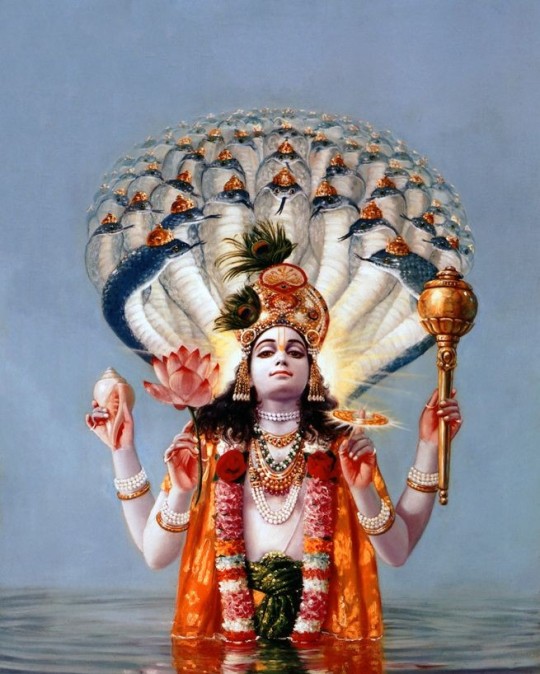
Vishnu is the god of Preservation, the great maintainer who often appears in various incarnations (avatara) to provide salvation for humanity. Some of his best-known avatars, who are tremendously popular and beloved throughout Hindu India, are the gods Krishna and Rama.
2. Lord Shiva
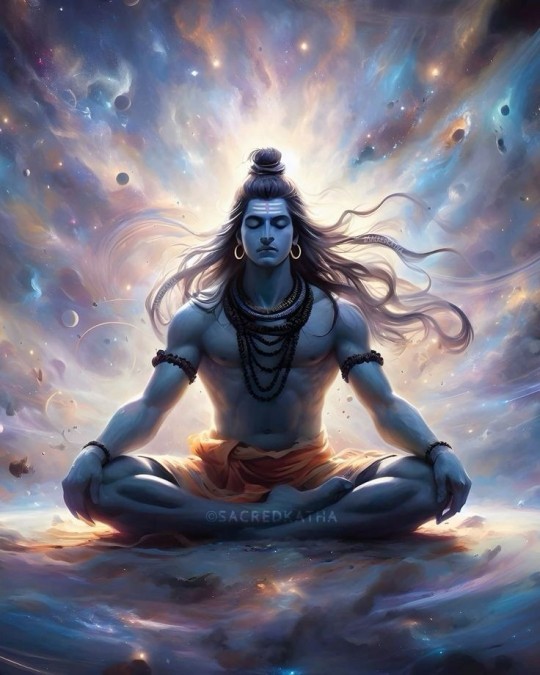
Shiva holds one of the most prominent roles in Hinduism as the god of destruction. He is one of the three most important gods, alongside Brahma (the creator) and Vishnu (the preserver). The sect of Shaivism holds that Shiva is the Supreme Being which all other gods are aspects of.
3. Maa Kali

Kali is the Hindu goddess of death and rebirth, she expresses the dual nature of the destruction that must come before new beginnings, and of the strength of the female power which can sometimes do what the man cannot. She is also the goddess of time.
4. Maa Durga
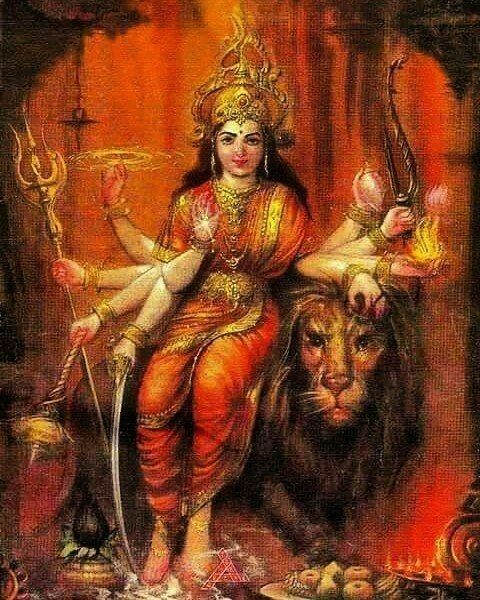
Durga, goddess of Shakti - the divine positive feminine energy and focus of festival celebrations. This very elegant bronze figure of Devi (goddess) Durga - is an attractive and prominent figure and a principal deity in Hinduism.
5. Lord Ganesha
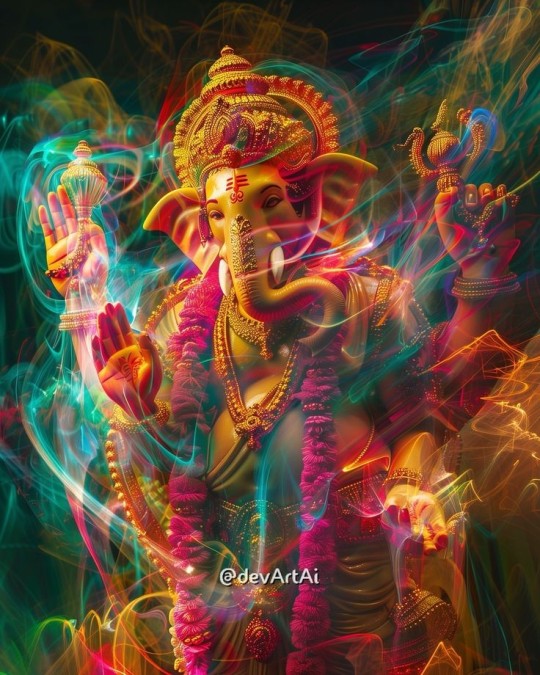
He is widely revered, more specifically, as the remover of obstacles and bringer of good luck; the patron of arts and sciences; and the deva of intellect and wisdom. As the god of beginnings, he is honoured at the start of rites and ceremonies
6. Maa Saraswati

Saraswati is the Hindu goddess of knowledge. She is associated with wisdom, music, art, and learning. She is one of the three main goddesses of Hinduism, along with Lakshmi and Parvati. Together the three goddesses are called the Tridevi.
7. Maa Lakshmi
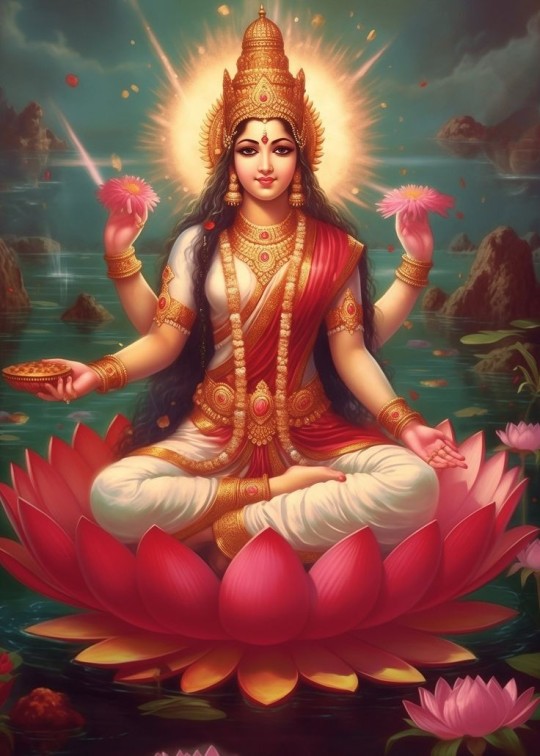
Lakshmi is the Hindu goddess of wealth, good fortune, happiness, youth, and beauty. She is the wife of Vishnu, the god that sustains the universe; he makes sure the universe stays together while Shiva, the destroyer, rips it apart.
#tarot reading#tarot spread#tarot cards#tarot blog#tarot#pick a card#pick a pile#tarot and astrology#tarot community#tarotblr#tarot asks#tantra#hinduism#hindublr#sanatandharma#tarot justice#tarot journal#the divine masculine#tarot divination#spiritual disciplines#future spouse#kashmiri hindus#channeled message#tarot blr#tarot beginner#future spouse reading#indian goddess
201 notes
·
View notes
Text
Random Vedic Astrology Observations
Adele who is Ardra Rising and Lana Del Rey who is Ardra Sun both have a Paradise tattoo on the side of their hand
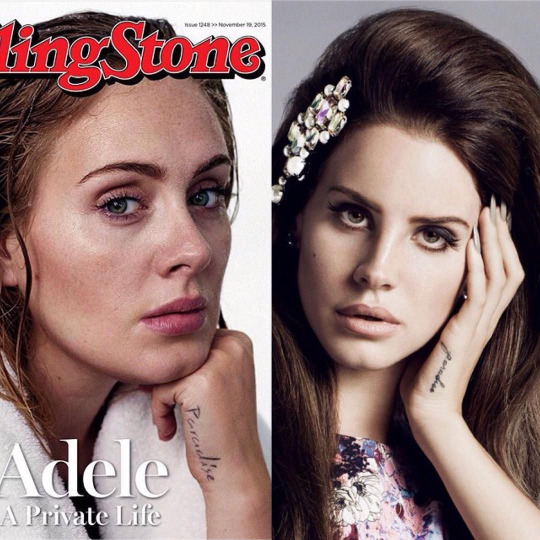
This is very interesting symbolism because Ardra nakshatra is preceded by Mrigashira nak which follows the fall from Paradise.
2. Pisces natives 🤝🏼 sculptures


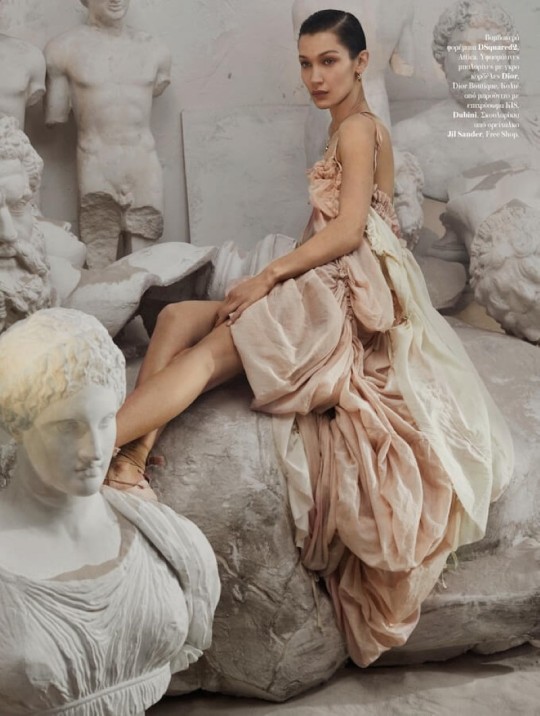
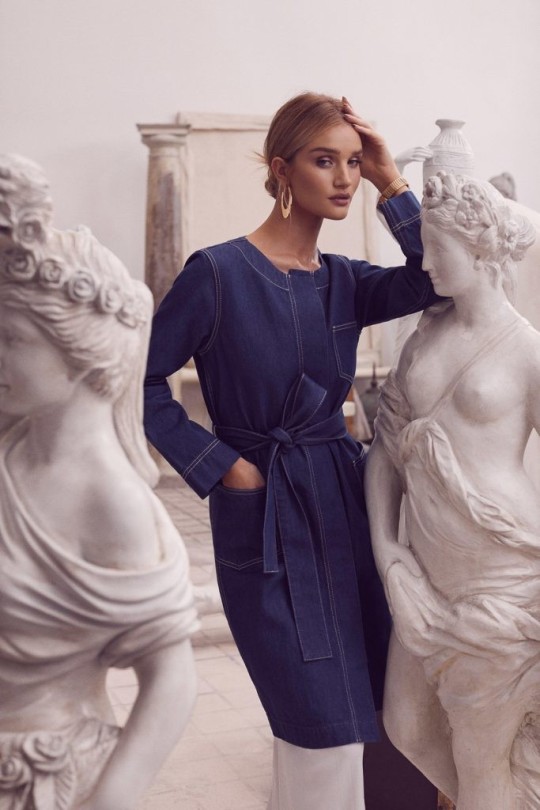
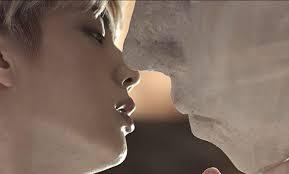
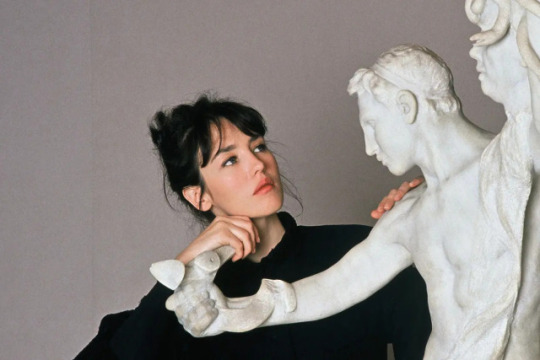
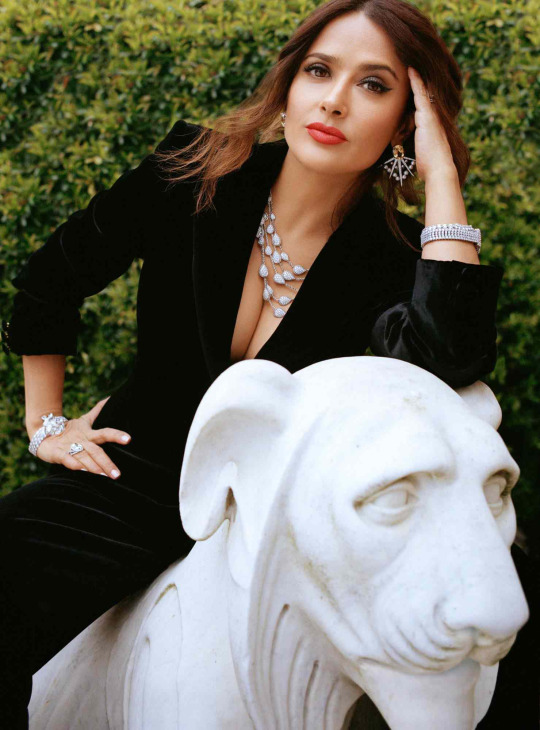
L to R
Rihanna- Revati Stellium (including Moon & Rising)
Ava Gardner- Ketu in (1 degree Pisces) Purvabhadrapada
Bella Hadid- Ketu in UBP
Rosie Huntington Whiteley- UBP Mercury & Rahu, Mars in Purvabhadrapada (0 degrees Pisces) and Jupiter in Revati atmakaraka
Jin- UBP Moon
Isabelle Adjani- Revati Rising
Salma Hayek- UBP Moon
3. Jyeshtas really love jewellery
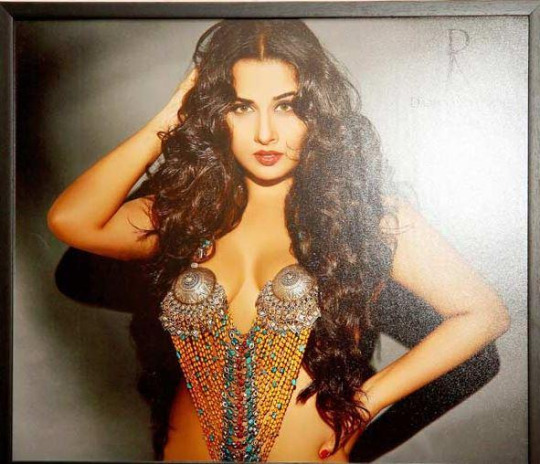

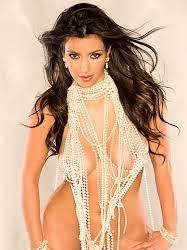

Vidya Balan- Mercury in Jyeshta (atmakaraka)
Rekha- Jyeshta Rising
Kim Kardashian- Jyeshta Rising
Nicki Minaj- Jyeshta Sun
4. I'd earlier made an observation about how Mars influenced men tend to go after older women and I thought I'd add a few more examples to that list!!
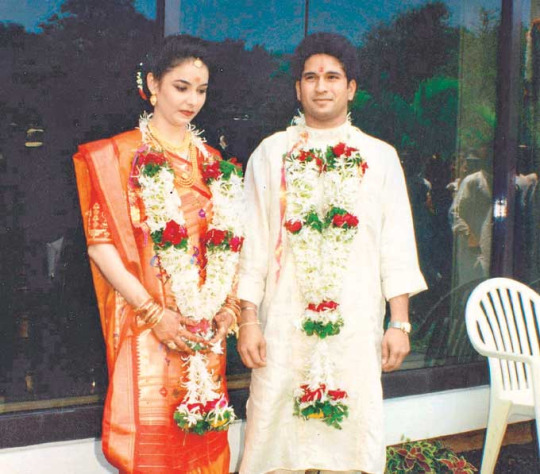
Sachin Tendulkar & Anjali Tendulkar have an age gap of 6 years and their wedding was hugely controversial when it took place in the 90s. Sachin was only 22 when he got married.
Sachin has Mars in Dhanishta atmakaraka and Moon in Purvashada amatyakaraka

Shikhar Dhawan and his ex-wife Ayesha Mukerji have an age gap of 10 years.
Shikhar is Dhanishta Rising, Mars in Chitra atmakaraka with Purvaphalguni Moon

Arjun Kapoor and Malaika Arora have an age gap of 12 years
He is most likely Chitra Rising
He also has Venus (amatyakaraka) conjunct Rahu in Bharani
I know that Bharani is Venus ruled but Bharani is the confluence of Mars & Venus energies and is ruled by the Mars ruled Aries and is another nakshatra that commonly appears in the charts of men drawn to older women

Aditya Pancholi is 6 years younger than his wife Zarina Wahab
He has Sun in Purva Ashadha, Venus amatyakaraka (in Jyeshta) Jupiter in Bharani and Rahu in Mrigashira

Karan Singh Grover is 6 years younger than Bipasha Basu
He has Moon in Dhanishta, Mars (amatyakaraka) conjunct Saturn (atmakaraka) in Chitra with Ketu in Purva Ashada
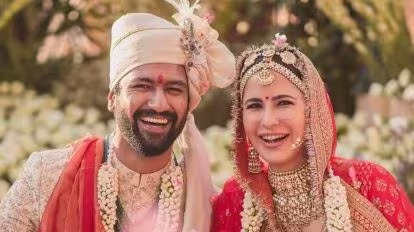
Vicky Kaushal is 5 years younger than Katrina Kaif
He has Venus in Mrigashira, Mars in Dhanishta, Jupiter (amatyakaraka) in Bharani, Ketu in Purva phalguni

Farhan Akhtar and his first wife, Adhuna Akhtar have an age gap of 7 years.
Farhan has Sun (atmakaraka) conjunct Mercury (amatyakaraka) in Purva Ashada and Saturn conjunct Ketu in Mrigashira
5.


idk if im crazy but i think these 2 women have similar features 😭😭
Zhou Xun is Chitra Sun, Anuradha Moon, Swati Mercury, Chitra Venus & Mars
Ning Ning is Chitra Sun, Bharani Moon, Swati Venus and Ketu in Anuradha
6. Rihanna has a tattoo of Goddess Isis on her chest
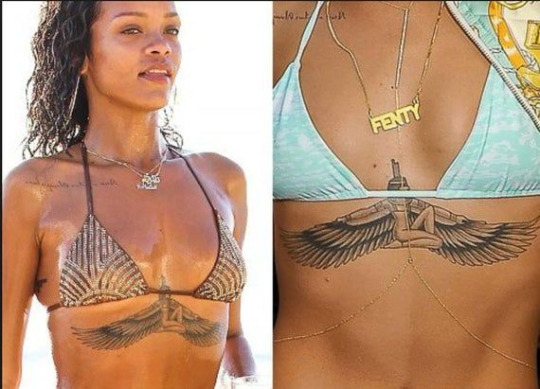
Rihanna is Revati Moon and Goddess Isis had powers like love, healing, fertility, protection, wisdom and magic. By virtue of her magical knowledge, she was said to be "more clever than a million gods". Revati nakshatra natives are endowed with divine spiritual wisdom and the deity of Revati, Pushan is the Sun-god in the form of Divine Guide and Nourisher, who helps us to find the right path and leads us to the right solutions.
Revati represents wisdom, empathy, unconditional love, fertility, growth, prosperity & spirituality.
7. Harry Houdini was a Hungarian-American escape artist, illusionist, and stunt performer, noted for his escape acts.
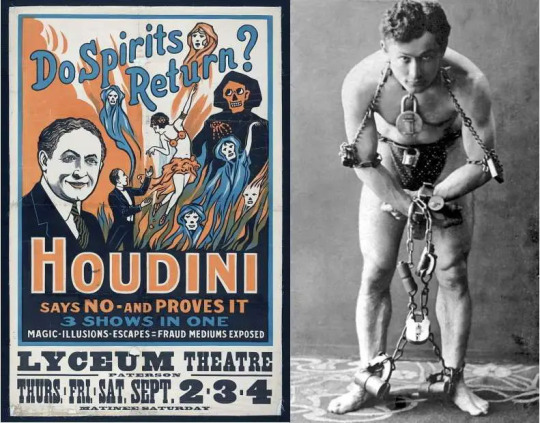
He has UBP Sun, Mrigashira Moon, Venus in Revati (exalted) and Ketu in Swati with Shravana Rising
Swati is connected to Maya or illusion so it makes sense as to why someone who has Ketu placed there would become notorious for hoodwinking the public.
Mrigashira nakshatra involves HEAVY themes of running away, escape and being trapped AND finding a way out. If you look at the mythology, its about Brahma's favourite daughter who takes the form of a deer to leave the heavens and run away to the earth to escape her father's sexual advances towards her.
Pisces rashi is almost always present in the charts of magicians or people who have some kind of illusory appeal on the public. Most mega successful celebrities have prominent Pisces placements, most supremely talented actors and singers do. The ability to put yourself out there yet remain completely mysterious and keep people under a veil is a uniquely Piscean trait.
Obviously with that Shravana Asc, he was basically born for this job. Moon dominant people are ADEPT at manipulation and making black seem like white or vice versa.
Dua Lipa recently released a song titled Houdini and she's Punarvasu Moon which I think is another nakshatra that is good at casting illusions.
#sidereal astrology#astrology notes#vedic astro notes#astrology observations#vedic astrology#nakshatras#astro observations#astro notes#astrology#astroblr
426 notes
·
View notes
Text
thinking about how i went to an art museum and saw a statue of brahma yesterday..... brahma the priest god..... brahma the creator god..... brahma the god with many faces and many arms...... brahma whose wife is sarasvati, goddess of learning and arts....... brahma who lost one of his heads to the god shiva, the destroyer god....... something something peter nureyev, the angel of brahma, creator of a revolution for a new world, wearer of a thousand masks, who followed his partner's quest for knowledge to another planet and his demise, who lost his identity to the dokana group which seeks to destroy the world as it is.......
#there's an Implication here#i know some of you see where i'm going with this#the penumbra podcast#tpp#junoverse#peter nureyev
101 notes
·
View notes
Text
rohini
Rohini -"The reddish one"The star of Rohini is in the constellation ♉ and Aldebaran color rose. Star that is characterized by the eye of the Bull Taurus Animal symbol. Rohini Animal symbol is the snake 🐍 and the snake is symbolic of wisdom or salvation.
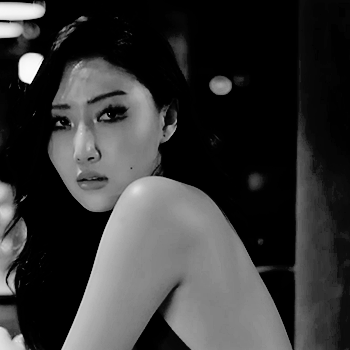
Snake is seen as a great force of nature and can be good/evil. When you look into the eyes of a snake you are said to be lead into a trance. The natives of these sign can be able to have great magnetic/hypotonic gaze

Rohini's favorite wife of Chandra(Moon). He ignores his other 27 wives (nak) and later has to be taught a lesson. In the story, Malena is a beautiful woman who lives alone while her husband is away for war. The woman in the town is jealous. Hwasa pays homage to the scene above.

In the teasers, the pictures are a red theme. Her album cover is the image of a snake too. She performs this on Mamas first in purple (merged of lower &higher mind). She gets touch by the water awakening her. Then the men circle her closing her in.
She emerges out in all black with a gold snake on her.
Hwasa a Korean singer has tattooed for protection. "In modern times, the triquetra symbol... as a symbol of anything three-fold e.g. the cycle of life (life-death-rebirth), the promise of a husband to his wife (love-honor-protect), the family"…
Jimin has his moon in this position and the mv black swan. The deity Brahma vehicle is the swan. Rohini man in kpop can be known for their cute image.
Once people meet them they are seen as the exact opposite .

Both of them were in the top three of brand rankings. Kang Daniel was #1 sun conjunct moon. Jimin being lift by Jungkook in white. Rohini people are charming, sensual, and can be the center of attention in a room. The man often hypes themselves up and like to uplift the mood.
Hwasa comeback being associate with pink the color associated with rohini her moon . Comeback about to be huge 💗😎
Finish Assassin's Creed 3💙 Conner has Mer in Purva Bhadrapada ♒ Amtakaraka. 🌟of tremendous perseverance. He lost his mom when he during his mars/Saturn Dasa. Sasa yoga Sa in Kendra results in wandering leader of free spirit. Connor prob my fav assassin never abuse his power.


I was looking into Rohini /Ardra today he has Rohini sun & Mercury.
Him surrounded by luxury cars 🚘 . The. Last picture him in bondage (Ashelsha Rahu) Ketu cap sravana.

was thinking that Park jihoon had to be Visakha and I watch the GQ interview knew he was. Moon in libra Visakha " I have a scary personality like a tiger " 🐯 Tiger is the animal symbol.
Dr. Pai mentions how the natives love pink and the man like light pink.
Park Jihoon's favorite color pink ☀️ in Rohini. Rohini nakshatra bird is an owl. Vanoss's gaming moon in this position has an owl as his symbol. He has 25.3 million subs.
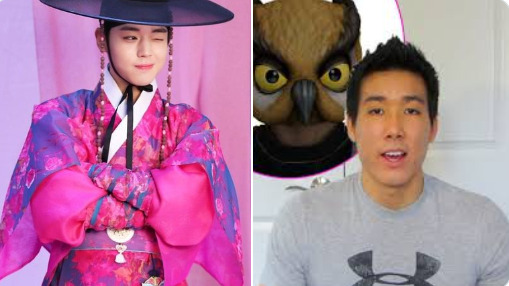
Just Rohini man eyes 👀 gaze
Rohini in Taurus in the sign venus ~ "Beauty is the eye of the beholder"


Raven - Taurus -Rohini Moon & Sun in aries Ashwini she had to deal with her egoistic father. Finally, breaking free from him and it interesting how Rohini ladies in sci-fi tend to have these crazy powers. Portray is a girl who knows nothing, but can destroy the world easily.
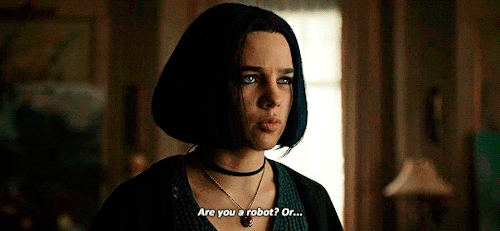
#rohini#astrology#moon#vedic astrology#titans#park jihoon#kpop tarot#bts#bts tarot#bts jimin#ji#jimin tarot
83 notes
·
View notes
Text


'Vishnu & Lakshmi'
Talon Abraxas
The Symbolic Meaning of Lord Vishnu and Lakshmi
Lord Vishnu is Hindu Myth
Hindu’s recognise Vishnu as the “protector.” He is the aspect of your personality that can dissolve the ego and uphold new Dharmas that enable you to develop peace of mind and bliss.
Ayurvedic teachings describe consciousness as being present. By taking control of emotions present in the five elements and the three gunas, you can take control of your life and master the energies of universal manifestation.
Vishnu is the higher consciousness that guides us and downloads messages that inform us what the right actions are to take. The problem most of us suffer is not knowing when we receive these messages because we are rooted in base consciousness.
Conscious comes to us as a thought, symbolised by Brahma in Hindu mythology. In the “Padma Purana”, Vishnu gives birth to Brahma who blossoms from the lotus flower that sprouts from Vishnu’s navel.
Brahma is said to be the creator of all things. He is the manifestation of ideas in the physical plane. The Lotus flower symbolises enlightenment, implying that consciousness passed to mortals is the Absolute Truth. The instructions to follow.
The Rig Veda states: “Vishnu is the most ancient of all, yet also the most recent. Nothing and no one creates Vishnu, yet Vishnu creates everyone and everything.”
In essence, the Supreme deity is a creative source but serves a greater purpose as the preserver. Escaping the bonds of the habitual mind is not easy and Vishnu has to keep a check that right actions are being followed.
It is said that Vishnu created the world with the right side of his body – that which is controlled by the left-side hemisphere of the brain. Although there are creative aspects in the right-side of the brain, it is widely accepted that most creative powers arise from the left side of the brain.
The right side of the brain is associated with collecting information and analysis. It’s the sensible part of the brain that talks us through what we should really do.
The Incarnations of Vishnu
All matter is conscious which evolves. As Absolute conscious, Vishnu creates the world through Brahma, and Hindu mythology gives an account of the evolution of Earth in the incarnations of Vishnu.
According to legend, Vishnu has reincarnated nine times so far. They are:
Matsya, the fish
Kurma, the Turtle (reptiles)
Vahara, the pig (animal life)
Narasimha, half man, half lion
Vaman, the man-dwarf
Parashuram the man with an axe
Rama – moral man
Krishna – philosophical man
Buddha – enlightened man
As consciousness evolves in nature it consistently creates improved versions of itself. But Vishnu can only do this with the help of his wife Lakshmi, the goddess of wealth and prosperity.
The Symbolic Meaning of Lakshmi
Lakshmi emerged from the churning of the milky ocean on a lotus flower and subsequently incarnates amongst mankind in various forms. Described as ‘the mother of the world’ the goddess nurtures consciousness.
Lakshmi cleans Vishnu’s feet to show her nurturing nature. In chapter 8 of the Vishnu Purana says:
“Vishnu is meaning, she is speech; Hari is polity, she is prudence; Vishnu is understanding, she is intellect, he is righteousness, she is devotion.”
Lakshmi means ‘goals’ and as the goddess of wealth, beauty and love is said to reside in those that are prospering in life. In Hindu art she is always depicted sitting on a one hundred petal lotus indicated she is pure.
Together with Vishnu, Lakshmi is Absolute Consciousness, or The Truth.
Her four arms represent Dharma (doing the right thing), prosperity, perfection and freedom from mental and emotional bondages.
Other qualities of Lakshmi are portrayed through the elephants she is often pictured with. In Hindu esoteric symbolism, elephants represent strength, wisdom and patience, qualities needed to nurture.
The symbolic meaning of Hindu symbols
In ancient myth and Hindu art, Vishnu carries symbolic objects in his four hands and lies on a bed of floating serpents. The serpents represent the wisdom and peace of a calm mind that is freed from anxious thought.
Vishnu’s other symbols are:
Conch = vibrational frequencies and energetic forces that create and sustain all life in the universe. Scientifically speaking, Vishnu is the personification of the Conscious Universe.
Mace = the destructive nature of the god. It symbolizes the dissolution of ego and negative traits or even the destruction of the universe itself.
Bow or Lotus Flower = Both the lotus and the bow represent awakened consciousness that allows you to see beyond the veil of illusion.
Discus = The spinning discus symbolises Purity of mind and used by Vishnu to destroy demons.
The symbolic meaning of Vishnu and Lakshmi relates to the highest forms of human consciousness that we are aware of. Together they tell us what to do, and give us the ability to nurture Brahma into fruition.
Master Mind Content offers online symbolism courses. We have several in-depth guides that explain how symbolism relates to the body-mind-energy connection. Understanding symbolism can help you make important decisions, improve your quality of life and understand more about the world.
33 notes
·
View notes
Text
Rant about the book Jom is reading
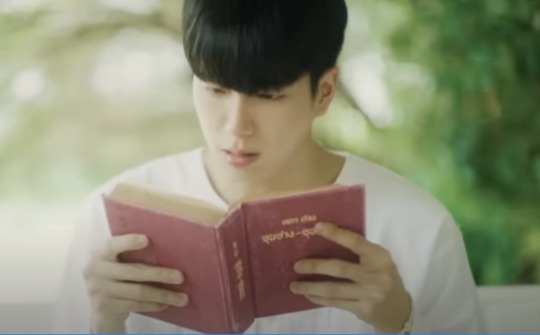
The book Jom is reading from is Khan Chang Khan Phaen, a Thai literary classic. It is folklore from Siphon Buri and was only written down long after it was conceived.
The story by modern standards is quite problematic, I have summarised the story below but there is a TL;DR below this paragraph;
Khun Phaen (previous name, Phlai Kaeo), Wan Thong (previous name, Pham Phi La Lai) and Khun Chang were childhood friends, Shun Chang is handsome whilst Shun Phaen is balding. Wan Thong would fall in love with Khun Phaen and Khun Chang would fall in love with Wan Thong and they marry but he was sent to command an army to Ching Mai. During his absence, Khan Chang came up with a scheme to get Wan Thong to marry him, by lying that Khun Phaen was killed in action, it worked and Wan Thong was unwillingly married to him. When Khun Phaen came back, he found what happened and tried to get Wan Thong back, despite him finding a wife in Chiang Mai already. He kidnap Wan Thong from Khan Chang, getting a 3rd wife in process. Each side would kidnap Wan Thong back and fourth a couple times which led to a trial by Phra Phanwasa (meaning the Queen mother), the matriarch of the Kingdom, which ended in Wan Thong being executed for not wanting to commit to either men.
TL;DR a woman gets stuck in a love triangle between a man she loved which betrayed her trust and a man she didn't love who treated her well but their relationship was based on lies. In the end she was executed for not committing to a relationship. (Who could blame her to be honest)
Parts of this epic is actually mandated in Thai schools (I had this for one of my Thai midterms, lol) and in the education system, they focus on the literary rather than the historical context behind the epic.
Many scholars such as Sujit Wongthes believe that this epic is actually a story about a fictional hero of the Suphannaphum Kingdom, one of the kingdoms that would become Ayutthaya in the 14th century. The Suphannaphum dynasty would rule Ayutthaya for much of its early history, which might explain how the story is so widespread.
Sujit believes that many aspects of the epic is representative of the early history of the Suvarnabhumi (not the airport) region, such as
Khun Phaen being a name for the Hindu god of creation, Brahma
Khun Phaen's magical sword, the "Fa Fuen" is named after an ancestral god of the Nan and Luang Prabang region.
When presenting the "Fa Fuen" to Phra Phanwasa, she placed it next to the Chai Si sword, which is representative of the Lao-Khmer origins of Ayutthaya.
All in all, Sujit argues that this folklore is more rooted in the ruling classes than the popular folk. This analysis of Khun Chang Khun Phaen is not present in the episode though, as this would ruin the mood of it so much.
But its inclusion even though it seems out of place (Suphan Buri is in the central parts of Thailand whilst the story is set in the north), is actually not that weird. In the period of the series, Bangkok has just had a major reforms to local administration, ditching the Mandala system in favour of western style centralisation based on colonial administration in the Dutch East Indies. This had the effect of Bangkok suppressing Lanna culture and a "Siamisation" of Lanna. Yai's family who I presume is local administrators sent from Bangkok shows this very cleary, he doesn't try to blend in with locals, he speak the central (Siamese) tongue and reads Siamese literature.
The inclusion of this epic rather than using something most Thai people already know to create the scene, it also creates the historical backdrop in which the series is set.
Thank you for coming to my TedTalk. I might talk about Sunthon Phu, which Yai recited whilst drunk and also talk about the historical context behind the series too. Please tell me if you are interested.
151 notes
·
View notes
Text
NAKSHATRAS AS GODDESSES
5/27
🌙Mrigashira🦌
DISCLAIMER: This is based solely on my research and the patterns that I saw. I can't promise that I'm gonna be sure in all the coorelations, but I'm going to attribute each nakshatra a goddess that I think fits it the closest. If you're dissapointed, to make up for it, I'm going to list some other deities in the end that I think also fit the nakshatra. Don't come for me if you think I'm wrong, be respectful in the comments if you think so and have fun 🤍
This one is more of a collection of very similar goddesses who are all pretty much well-suited for Mrigashira. I still chose the principal goddess, although it was very hard to focus on only one.
Flidais

Pantheon: Celtic
Name meaning: soft-haired, fair haired.
Associations: Hunting, woodlands, wild animals, cattle, deer.
Symbols: deer
Flidais is a somewhat obscure Celtic goddess of the hunt. She's similar to more famous goddesses: Artemis and Diana, but unlike them, she's not a virgin and her story is different.
The mythology of Mrigashira is about how the seeming perfection of Rohini (the union of sexes) gets shattered. It's the birth of seduction and pursuit between the sexes, this is the place where Eve eats the forbidden fruit and becomes aware that she's separate from the male, not just something to be placed under his submission, as she was in Rohini. In Hindu mythology, when Rohini realizes that she's desired by Brahma, she turns into a doe and flees. Brahma then turns into a deer and chases her, before his head is cut off by God Rudra (God of the next nakshatra_ Ardra), thus, the deers's head being Mrigashira's symbol.
The story of goddess Flidais goes like this: She's unhappily married to a man she dies not love, feeling stuck and not knowing what to do, until another man appears, with whom she shares a deep love. He gets challenged by Flidais's husband, and he wins. As a reward, he gives deer and cattle to Flidais, for her to have something on her own, placing his faith in her. In one myth, she's said to have transformed into a stag.
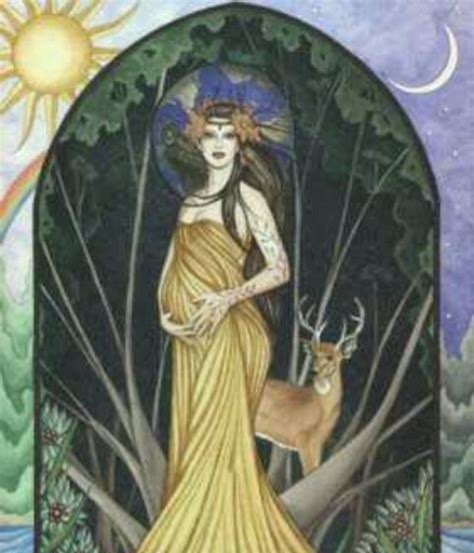
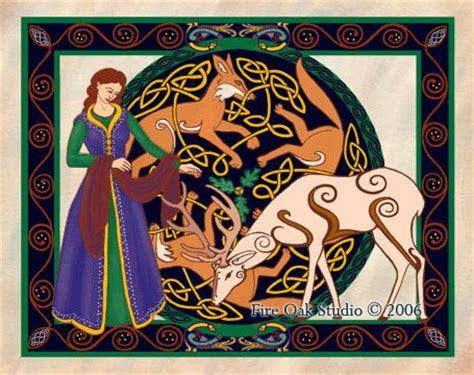
Flidais has a surname, Foltcháin, meaning "beautiful(soft) hair". Mrigashira belongs to a clan of nakshatras called Pulastya (smooth haired).
Besides Flidais, there are other goddesses that can be coorelated to Mrigashira. One of them is Dali- Georgian goddess of the hunt, deer and other horned wild animals. She's said to have beautiful, long golden hair and is the Goddess that governs the rules of the hunt. Either completely nude or dressed only in white, she frequently mated with humans as she wished, just like the female in Mrigashira awakening to her own sexual power. She was said to be unbelievably beautiful, both irresistible and terrible. Dali was harsh with those who violated her rules. She lived in a cavern in a mountain. Parvati, the goddess that was born under this nakshatra, was the goddess of mountains, among other things.
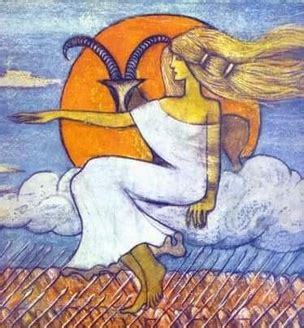
There is also a story about a celtic maiden named Sadhbh, who refused to accept a Druid's advances and because of that, was cursed to be a doe. After three years, the serving man of that druid took pity on her and said that if she were ever to set foot in the dún (castle, fort) of the Fianna of Ireland, the curse would be lifted. Fianna were small bands of warrior-hunters in Ireland during the Iron age and early middle ages. Sadhbh travelled straight to a house that belonged to a Fionn. She was found by him as a doe when he was out hunting. His dogs didn't harm her since they too had been humans before. When they returned to the house, Sadhbh was once again a beautiful girl. They got married.
After Fionn was called to battle against the Vikings, the druid reached Sadhbh and laid the same curse on her, again. Fionn spent several years searching for his wife, but without success. At the end of those seven years he found a wild boy in the forest who said he was raised by a doe. Fionn looked at his face and recognising his wife's features, he realised that he was looking at their son. The boy was Oisín, a famous figure in Irish mythology.
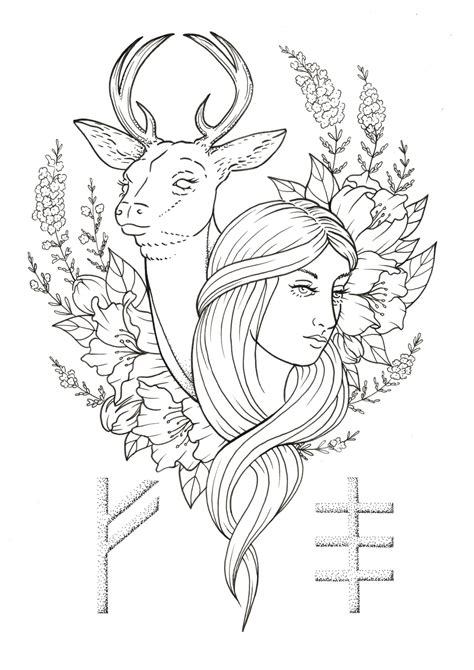
Another interesting deity is the Albanian goddess Zana- goddess of the mountains. Zana were said to be fairies who lived in the mountains and bathed in waterfalls and river streams in nature. They're said to have a very brave character that was known to all. She's a somewhat obscure goddess given her name comes from the name of a creature, but I thought that she was interesting nontheless.
I want to talk about Mrigashira's ruling deity- the moon god Soma. Soma is also known to be the exilir of immortality. Mrigashira's power is to give fulfillment, so to drink Soma, to eat the forbidden fruit, to attain something not everyone has access to is risky, but it's worth the risk. Mrigashira is also associated with quests, adventures and bravery (just like Bharani, the other Venus-Mars ruled nakshatra). The real life natives of Mrigashira are often daring and inquisitive, always craving something else besides what they have.
The moon god being Mrigashira's deity makes me think that Artemis- Greek goddess of the moon, hunting, deer and other wild animals is a great fit for it, but her virginal nature is not in alignment with Mrigashira. If we think of her virginity as simply her being unmarried and independent, then she definitely can be coorelated to Mrigashira. The same goes for Diana- her Roman equivalent.
Some other deities I coorelated to Mrigashira other than Flidais:
Artemis- Greek goddess of hunting, deer, wild animals, the Moon and virgins.
Diana- The Roman equivalent of Artemis.
Dali- Georgian goddess of hunting, deer and other horned wild animals.
Zana- Albanian fairy goddess of the mountains.
Sadhbh- Irish doe-maiden goddess
Cernnunos- Celtic horned god, the god of wild things.
This is it for Mrigashira. I'm very happy I found the Goddesses whose mythologies were so obviously similar to Mrigashira's. As I said, it was hard to choose just one, but I think that I made the right choice, given that Flidais ticked off the most similarities. I'm consistently fascinated by the coorelations between seemingly unrelated cultures and this one was big. It's also my sun, rahu and saturn placement, so no pressure there lol.
Anyways, let me know what you think. Like COMMENT AND REBLOG, please interact with me if you found this interesting. Love you, and take care 🤍🤍🤍
#mrigashira nakshatra#mrigashira#vedic astrology#astrology#nakshatras#astrology observations#goddesses#astro notes#sidereal astrology#celtic paganism#celtic goddesses#georgian goddess#albanian goddess
132 notes
·
View notes
Note
sooooo you mind telling me about Vasant? i want to learn about him
*stretches fingers* Ight this is what I've been waiting for.
So Vasant is a very minor god in the Vedic religion. His main appearance is seen in the Kalika Puran, where he emerges from a sigh of Brahma, while he was pondering on how to get Shiva a wife.
Now he has another name called Kasumakara, which means spring. Vasant's name means a person who lives away from their home returns in spring, i.e., end (anta) of residence (vasati)
Once he emerged from the sigh, Brahma asked Kama to take him in as in eternal companion, along with Rati. So they're a canonical trio. He mentioned that Vasant will always follow Kama wherever he goes. And guess what, Vasant's first campaign with his new brother and his gf was to get Shiva a wife, the very thing that incinerated Kama ☠️.
Also Vasant has this special army called Spring Army :3. How cute. He leads this army/follower group on his way to enchant Shiva along with Kama and Rati.
Now Vasant is not known to have a wife but My person hc of him is that he's an aroace icon :3
(his canon physical attributes differ a bit from my design of him btw)
#this is how much I've been able to dig up#but in future I'll add more info#:3#hindu gods#vasanta#vasant#hindublr#desiblr#desi tumblr#desi tag#hindu mythology#hindu myths#hinduism
62 notes
·
View notes
Text
Introduction to Yasodhara, Wife of the Buddha.
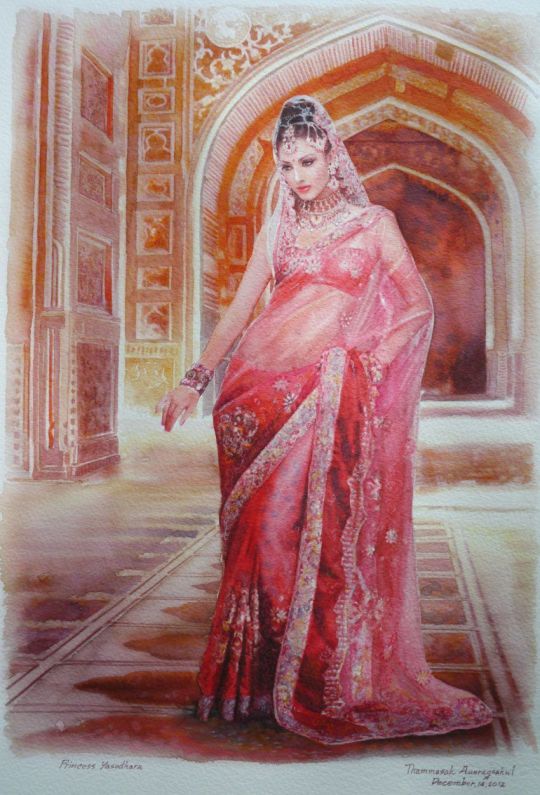
Yasodhara was the wife of Siddhartha Gautama (The Buddha). She became a Buddhist nun and was considered as an arhat (Buddhist saint)
The meaning of her name is "Bearer of glory". She was also popularly known as Bhaddakaccana, Rahulamata, etc…
Yasodhara has lived with the Buddha in his past lives, being his wife in all of them. In their past lives, she helps the Buddha and always stays devoted to him. In many of her lives, she rarely did bad acts/bad karma, making her one of the most holiest women in Buddhism.
She is an arhat associated with beauty, insight, womanhood, glory & devotion. Called "foremost in great insight"
She, in some unknown stories, was associated with Magic
Her (slightly summarized) life story 👇

Yasodhara was the daughter of King Suppabuddh & Queen Amita, She was born on the same day as prince Siddhartha. She was said to be a very beautiful Princess who was devoted, pleasant & sympathetic.
When Siddhartha was 16, his father wanted him to marry a benevolent & unjealous girl. Later, at a marriage event, Yasodhara was seen as the right person of that, After a series of events, Siddhartha & Yashodhara got married.
Yasodhara gave birth to a son named Rahula when she was 26. 7 days after, Siddhartha left the palace to seek answers, leaving Yasodhara devastated. When he was away, She imitated her husband's lifestyle by wearing simpler clothes, eating only 1 meal a day, & refusing offers of marriage proposals.
After a few years, Buddha later went back to his wife, where she rushed to him and clung to his feet. Eyes full of tears, missing his presence, now Fulfilled to see him again.
Yasodara recited the 'Naraseeha Gatha' to her son Rahula before sending him to join the Buddha. Rahula was joyful in his father’s presence & went with him to the temple. Rahula later became a monk & attained Arhantship. Yasodara's life is marked by sorrow & tears, but she has never shown anger.
Yasodhara joined the order of Monks, became an arhat, & established the first nun Order with 500 women. She dedicated her life to spreading Buddha's teachings & focusing on good karma.
Other stories of Yasodhara:
1. Yasodhara & the shakyan nuns.
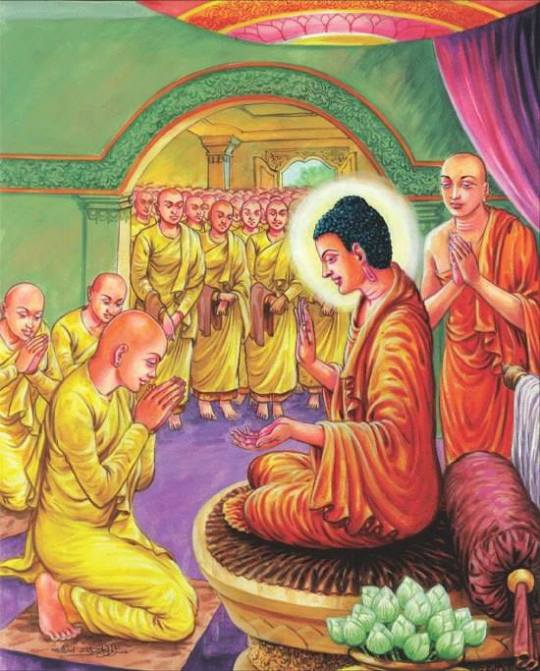
When Rahula became a monk, Yasodara asked for permission from King Suddhodana to become ordained. The king advised her to wait for the right time. After his passing, Mother Gotami obtained the higher ordination & started the ‘order of nuns’ in the Buddha’s dispensation. Yasodara eventually renounced her possessions and became a nun, along with a thousand Shākyan ladies, despite the extreme protests from her people.
She, & other Shakyan princesses who became nuns, received immense offerings and attention from devotees. Many royal figures and noble women became nuns under Yasodhara’s guidance.
2. Yasodhara’s Glory.
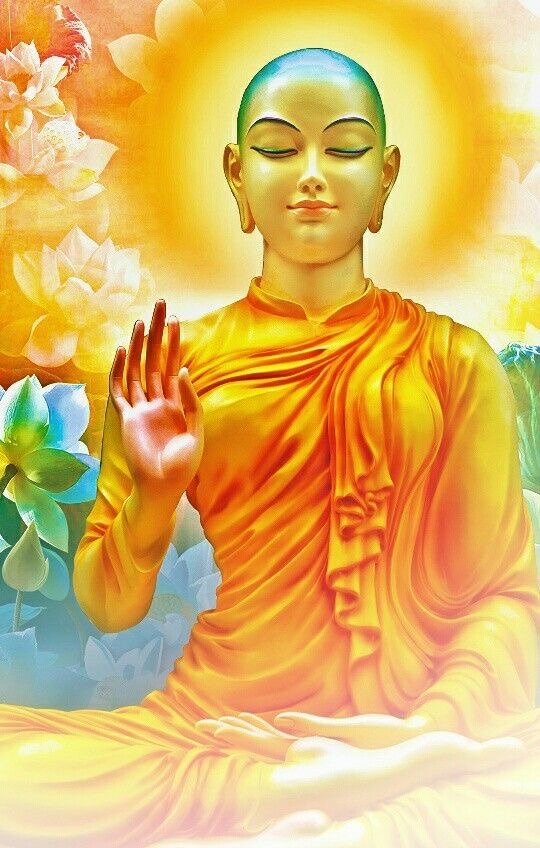
(this could possibly be a folk-story)
In order to prove her powers, Yasodara, in her spiritual form, performed numerous miracles, In the miracles, she’s said to have a voice that could be heard by the gods & brahmas who were dwelling in tens of thousands of universes. She transformed into different types of forms, into different elements, the sun, moon, mount Meru, & the god Indra.
She created a gigantic elephant and then plucked a divine tree from the realm Svarga (heaven), offering it to the Buddha like an umbrella.
She then attained nirvana, & was praised for her unwavering devotion and merits accumulated over countless lifetimes, a stupa was built to honor her legacy.
3. The princess’s love magic.
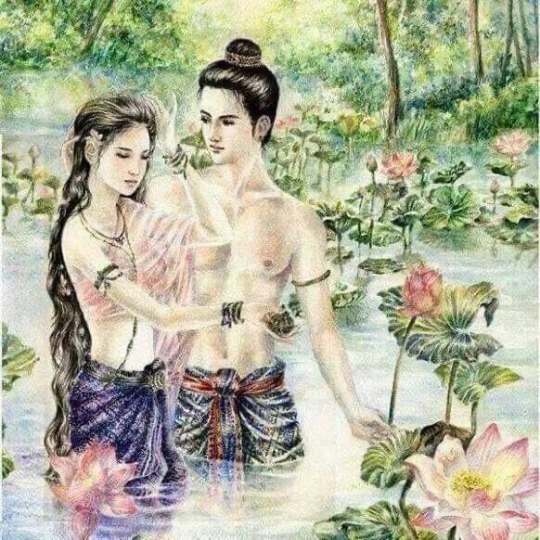
In one unknown story, when the buddha came back, Yasodhara tries to win back the Buddha by offering him a cake with medicinal herbs to change his feelings, she preformed love magic on the food and had her son offer it to the Buddha. However, the Buddha remain unaffected and tells a story from a past life where Yasodhara, as a seductive courtesan, had led him astray with a similar cake.
4. Yasodhara’s innocence.
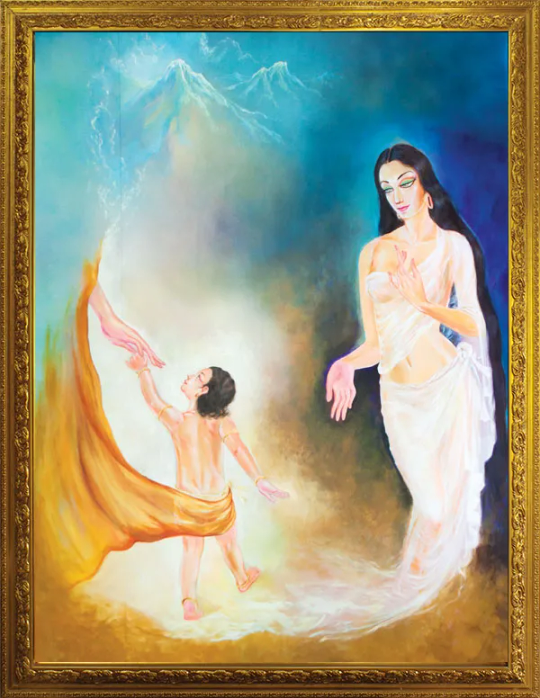
In the Tsa pao tsang king, it states that As a result of Yasodhara’s prolonged pregnancy, she was suspected of adultery by her father-in-law and the Sakyas. They dug a ditch filled with flaming wood and threw Yasodhara into it. She called upon the Buddha, the flaming ditch was instantaneously transformed into a pool of pure water, in the middle of which Yasodhara with Rahula in her arms was sitting on a lotus flower.
The Sakyas were convinced of her innocence and Rahula became the favorite of his grandfather.
5. Kama
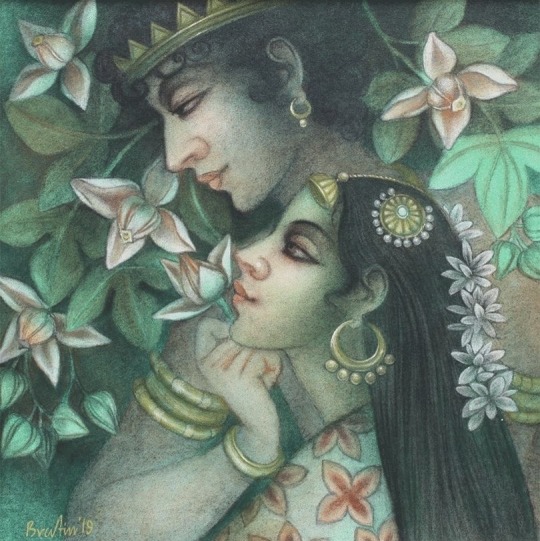
Prince Siddhartha would have practiced his cult of sexual magic (possibly tantric sex?) with Yasodhara. Both of them would often engage in sexual activities before they were ready to bring a baby.
There is also one story of them having intercourse on a palace roof. They were so into the act that they actually fell off the roof & didn't notice. They somehow managed to fall into a bed of lotus flowers which saved them from any injuries as a result of the fall.

"Sri Yasodara Maha Seya" is a peaceful temple/stupa in Sri Lanka that honors her. Devotees seek the protection & blessings of her which help them overcome obstacles in life.
Nuns are mostly the ones who take refuge in her, meditating in front of her stupa or making offerings. There are also energetic festivals in honor of her, with dancing, music & chanting. Poojas are also in honor of her.

Namo Sri Yasodhara maa🙏
#Buddhism#yasodhara#yashodhara#rahulamata#Bhaddakaccana#Bimbadevi#Theri#Buddha’s wife#stories#arhat#Arahat#Arhati#Princess#Desi#desiblr#buddhistwitch#buddhist temple#buddhist art#dharma#Stupa#Sri Yasodara Maha Seya#buddha
22 notes
·
View notes
Text
nakshatra observations p1 ✩‧₊˚
punarvasu, chitra, rohini, anuradha, shatabhisha, ashlesha, mrigasira


✩please don't plagiarise! the following is my own research and observations, so if something doesn't resonate please let it go✩
punarvasu nakshatra 。⋆ boundless imagination
this star relates to the idea of repetition & patterns that occur within the concept of other things. classically symbolised by arrows being placed upon a quiver over and over again. or the idea that ruling deity, goddess aditi is recognised to be the mother of her own father. unity and wholeness cannot be broken in punarvasu nakshatra
this nakshatra prominent in a person's chart usually indicates someone with a boundless imagination and a youthful curiosity for conceptually complex thought. it is a beautifully intricate star which resembles our desires to explore the great wonders and awes of life. i imagine these people becoming so lost within an immersive day dream that they can easily lose sense of reality. however, their strong sense of nostalgia tends to wash over and refreshes them, finding themselves once again. punarvasu natives are usually highly sentimental and fond of reflection
chitra nakshatra 。⋆ beautiful ingenuity
this star relates immensely to the design and talent it takes one to create beauty, typically in it's physical forms. ruling deity, visvakarma is often described as the chief of detailing and designing. he is who is talented enough to create palaces, cities, weapons, jewels and even replicas - quite literally anything you can think of, beauty and wonder is embossed in it's formation
i often notice that these individuals have such a keen eye for beauty and detail. their ability to create anything beautiful and aesthetic is expectational, no matter what it is they may wish to create. they are the types to even go to such lengths of adding little details where no one will even see it, they are truly dedicated to their craft. additionally, women with this star prominent can literally embody physical beauty and have an amazing sense of physical adornment, but of course that is not all there is to her. she is talented and multifaceted woman x
anuradha & shatabhisha nakshatra 。⋆ love vs lust & the celestrial nymph
one interesting aspect of these two stars is that their ruling deities mitra & varuna share mythological affinity. anuradha’s deity mitra is god of day-time & shatabhisha’s varuna is god of the night-time. these deities exemplify love & pleasure as a polarity in it’s higher & lower dignities. the story is as follows, the two deities once were of a singular body when they met urvasi, a celetrisial nymph & made love with her. mitra & varuna sepearted into two bodies as there was disagreement, mitra sought after the nymph for selfless love & varuna propositioned urvasi for sex & selfishness. urvasi desired mitra although varuna became too excited & ejaculated too early - urvasi felt bad & birthed varuna’s children through an artificial womb
anuradha resembles the highest order of adoration, love & devotion. another thing to note is that shatabhisha is not primarily a sexual star, it just has sexual & lustful potential. although, in this story the star of shatabhisha portrays it's lustful & pleasure seeking side. anuradha is all about companionship & mutual union - it is a beautiful star to be born under. anuradha people are usually adored and admired lovingly, shatabhisha people may simply be lustful or ignite these lower desires in the minds of others. i also find it fitting that the birth of varuna's child was artificial, as other research of mine correlates this star to the idea of parasocial relationships (will get into this in a different post)
rohini nakshatra 。⋆ red-girl
rohini’s ruling deity is brahma, the forefather & god of all creation. when rohini’s context is taken into sexual regards there are some impurities present. brahma being the god of creation had once desired to create his own wife in order to reproduce, his other children had protested against this idea as his wife was of his own creation. brahma became ashamed of himself for pressuring her. brahma discarded his body & created a new one to wash away impurity of thought. his old body lived on as a fog of danger & darkness
rohini nakshatra is the star of fertility & creativity, passion & beauty. the word rohini means red-girl, symbolising a woman’s menstrual cycle or the blushing or rosy cheeks of a woman. all is well in rohini for creativity, imagination & fertility but there is some other aspects to this star are not so favourable. rohini nakshatra may at times attract the wrong kind of attention & affection. women in general can become subjected to other’s infatuations & desires that are shameful, wrong & impure. this dark side of rohini resembles insidious external influence that comes way toward women
extras 。⋆
punarvasu & ashlesha nakshatra 。⋆
people with these nakshatras prominent in their chart usually love cats! they are the types to probably identify heavily with being a "cat person" as clique as that sounds. i find it so cute how pushya separates these stars, a nakshatra that symbolises milk
rohini, mrigasira & ashlesha nakshatra 。⋆
these stars are all symbolised by serpents. the most flexible and movable among all the relevant animal representatives, and also the only one without four legs. for this reason these people have the potential to become talented and amazingly hypnotic dancers! even if they don't dance, they may move and walk in a very mesmerising way
#astrology#vedic astrology#jyotish#astrology observations#punarvasu#chitra#anuradha#shatabhisha#rohini#ashlesha#mrigasira#nakahatra#vedic#sidereal astrology
878 notes
·
View notes
Note
Okay so
Im here to talk about Saraswan, Saraswati's original husband in the Rig Veda.
Imagine him and Brahma fighting over Saraswati ☠️ That'd be funny.
LMAO- 💀
Wait- so yeah I know he was the og husband but like... He's still married to her right? I mean it's not he would randomly disappear or anything...
So Saraswati still has Saraswan as her husband AND she's also married to Brahma??? That's the only way I can see it ngl...
Yeah... Can imagine them fighting... With how petty Brahma can be it would be so funny lmaoo 💀
Saraswan: That's my wife first
Saraswan: I'm the og husband!
Brahma: yeah doesn't matter
Brahma: that's my wife now-
#saraswati#goddess saraswati#rig veda#brahma#saraswan#hindu mythology#hindu gods#hindublr#desiblr#desi tumblr#desi tag#desi#desi shit posting
30 notes
·
View notes
Text
The Story of Solah Shringar
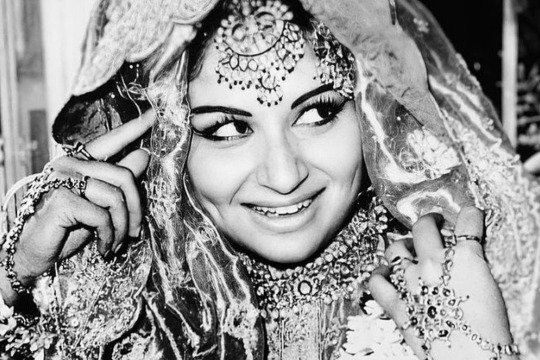
The Indian bride is the epitome of grace, elegance, and beauty. Her attire and traditional Indian bridal jewelry catch every eye and leave a lasting impression on everyone. While her wedding outfit accentuates her best features, her Indian bridal jewelry adds a subtle shine and a touch of sophistication to her entire look.
As per tradition, the Indian bride embellishes herself with 16 adornments on her wedding day. These adornments are called Solah Shringar. This ritual has been practiced since ancient times and is an integral part of bridal preparations.
The story behind the Solah Shringar features Rati, the wife of Kamdev, the Hindu god of love. Rati engaged in severe penance to appease Goddess Lakshmi. She was then blessed with the 16 adornments from Lakshmi and wore them to impress and marry Kamdev.

16 adornments (16 sringar)are
1. Sindoor
The first adornment is Sindoor, also known as kumkum or vermillion. Sindoor holds a special place as it marks the beginning of a woman’s new journey as a bride. Sindoor is applied by the groom on the forehead between the hair partition of the bride. The bride then continues to wear sindoor throughout her married life.
2. Hair care (Kesh Sringar):
We now focus on the ‘Kesh’, or hair. The Indian bride embellishes her hair using fragrant flowers and glittering headpieces. Traditionally, the bride made three braids that represented three holy rivers, Ganga, Yamuna, and Saraswati, and the trinity of the Hindu gods Brahma, Vishnu, and Mahesh. The fragrance of flowers keeps the bride fresh throughout the day and her Indian bridal jewelry embellishes her hairdo, adding another layer of elegance and beauty to her overall look.
3. Maangtika
The part of the forehead where the maangtika rests is believed to be the home of Ajna Chakra or the third eye. When the bride wears the piece of Indian bridal jewelry on her special day, she is believed to be connected with her third eye and has the ability to control her emotions and activate her knowledge, wisdom, courage, and willpower.
4. Bindi
The bindi also takes us to the third eye. Bindi comes from the Sanskrit word bindu, which means ‘point’ or ‘dot’. The bindi is closely associated with improving concentration and retaining energy. It is one of the most popular adornments worn by the Indian bride and is known internationally.

5.Kohl or Kajal
From the forehead, we move to the eyes. Kohl, kajal, surma, kanmashi, kaadige, kaatuka, and kan mai are some names for one of the oldest natural beauty products in the world. Kajal accentuates the eyes of the bride and is believed to ward off the evil eye in various cultures. The darkening around the eyes also protects the wearer from the harsh rays of the sun.
Kajal is an essential element of the solah shringar and makes the eyes look more prominent. It is undoubtedly a beautiful way to enhance the natural beauty of the bride.
6 .Karn Phool or Earrings
A wedding day look cannot be completed without a set of dangling earrings. Karn Phool is a Sanskrit term that translates to ‘flower of the ears’ and is an essential part of the solah shringar.
7 .Nath(nose ring)
The nose ring is another beautiful element of the Indian bride’s attire and is a symbol of valor, fertility, and spirituality. The large nose rings hooked onto the hair with a chain take the bride a step closer to creating her ideal look. It is one of the most ethnic elements of Indian bridal jewelry and a wedding day look is surely incomplete without it.
8 .Haar or Necklace
The one thing that brings the whole look together is the necklace. Necklaces are said to represent safety and abundance and are believed to help the wearer control their emotions better. Some necklaces feature specific motifs or gemstones that are believed to bring good luck and ward off evil spirits.

9 .Bajuband
This element of traditional Indian bridal jewelry is worn on the upper arm. The bajuband is believed to keep evil spirits away and protects the wearer. The Indian bride can embellish her wedding outfit with all sorts of armbands that are encrusted with diamonds and other colorful gemstones.
10 .Bangles, Bracelets, Choodiyan
Bangles and the Indian bride are inseparable. They’re a part of traditional Indian bridal jewelry that a woman always wears. It is believed that bangles and bracelets bring health, luck, and prosperity to the wearer and are more than a jewelry item or accessory for the traditional Indian woman. There are various wedding ceremonies related to bangles and bracelets across cultures that show us their significance in Indian culture.
11 .Hathphool and Aarsi
The hathphool is a clever mix of a bangle and a ring. Bringing the best of both together, this element of traditional Indian bridal jewelry embellishes the hand and wrist of the bride. The interesting crossover of the two pieces surely adds more flavor to the wedding day look.
A thumb ring known as Aarsi is also worn by some brides. Aarsi contains a small mirror. This mirror allows the bride to catch a glimpse of the groom since she is covered in a veil and cannot see the groom’s face.
12 . Mehndi
Henna, commonly known as mehndi, is undoubtedly one of the most amusing parts of a traditional Indian wedding. It is believed that mehndi brings good luck and joy to the bride. The darkness of the mehndi represents the strength of the bond between the bride and the groom. The solah shringar of the bride is incomplete without her hands and feet embellished with beautiful mehndi designs that add to her overall wedding day look.

13 . Kamarband (waist band)
The use of the kamarband, or waistband, is scarce in North Indian weddings but it is an important part of a South Indian bride’s trousseau. The piece of Indian bridal jewelry is adorned with gemstones and is used to accentuate the female’s body and keep her bridal saree in place.
14 . Anklets and Toe Rings
Commonly known as payal and bichhu, these elements of traditional Indian bridal jewelry embellish the feet of the bride. Payals can be recognized by the beautiful chime sounds they make whenever the bride walks. Toe rings are seen as a sign of marriage and a bride wears them until the death of her husband.
15 . Itar
Itar is the perfume that a bride applies to freshen her aura and stay fragrant throughout her special day.
16. Wedding Outfit
Finally, the one thing that clubs every element together and brings the bride’s imagination to life is the wedding outfit. The traditional Indian bride wore the classic red wedding outfit but with the evolution of Indian weddings, other colors have started to take center stage as well.
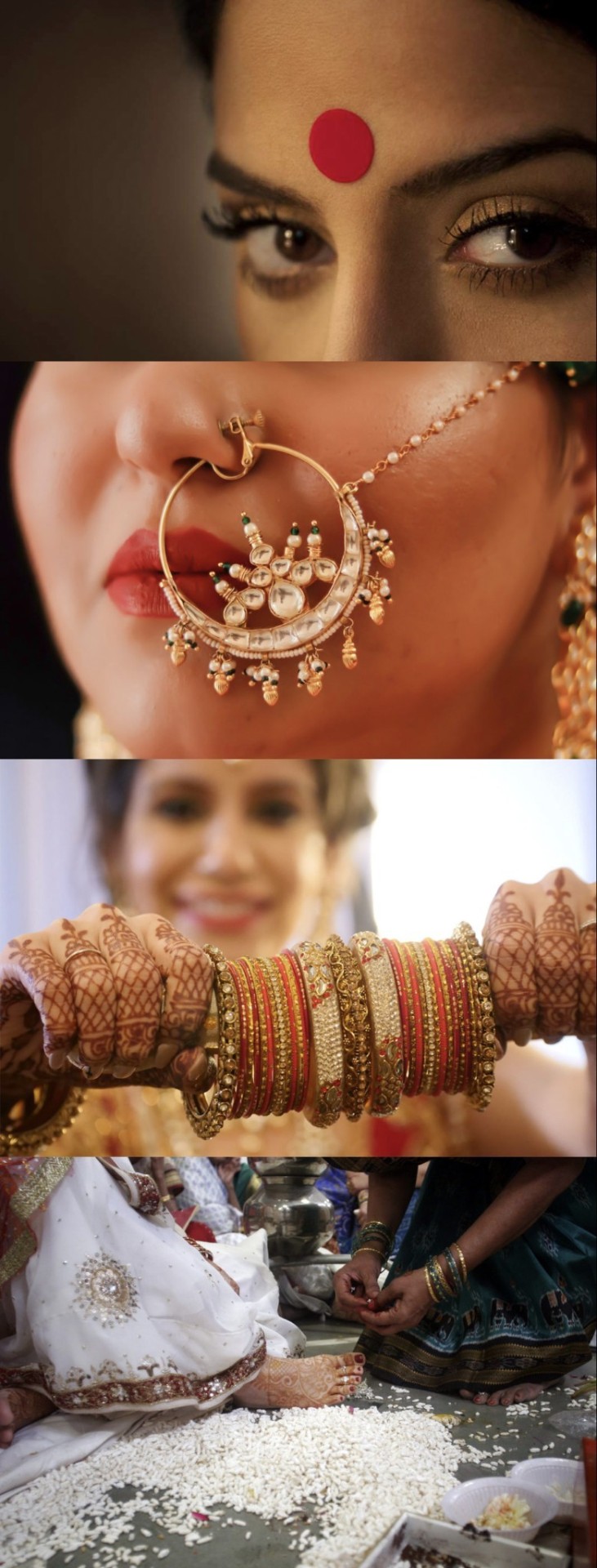
Source
#desiblr#16 adornments#16 sringar#desi girl#desi tumblr#being desi#desi tag#desi aesthetic#desi academia#desi#indian girl#indian wedding#indian culture#hindublr#hinduism#chakras#desi culture#beauty
35 notes
·
View notes
Photo

Agni
Agni is the Hindu god of fire. He is regarded as the friend and protector of humanity, in particular, he safeguards the home. Various forms of fire are associated with Agni and include the sun, lightning, comets, sacrificial fire, domestic fires, the fire of the funeral pyre, and the digestive fire which is within all humans. Agni was especially important in the Vedic period (1500-500 BCE), and the Vedas contains more hymns to him than to any other deity. He is still considered today omnipresent though not directly worshipped. Agni knows the thoughts of all people and is a witness to all important actions, hence the use of fire in many important Hindu ceremonies such as marriages. He is also referred to in sacred texts such as the Mahabharata as the 'Oblation-devourer' and the 'Purifier'. With flaming hair and riding a goat, he is easily identified in Hindu art.
Agni's wife is the daughter of King Nila who impressed the fire god by being the only woman in the kingdom who managed to kindle a flame in the royal palace. In some myths, Karttikeya (Skanda), the Hindu god of war, is Agni's son and the result of Agni's conquest of the Pleiades, the wives of the Seven Sages.
Agni & Various Fires
Agni is the son of the Celestial Waters, and that element is closely connected with fire which is thought to be carried down to earth within rain. From there fire is drawn up by vegetation and so when two sticks are rubbed together fire appears. Agni is also responsible for lightning which is born from the god's union with the cloud goddess. Another fire Agni is associated with is the funeral pyre; in this role, he leads the dead to their final judgement by Yama, ruler of the Underworld.
Agni is perhaps most closely associated with sacrificial fires where he is thought to carry the offerings of humans to the gods. According to various myths, Agni was at first afraid to take on this duty as his three brothers had been killed already whilst performing the task. Consequently, Agni hid in the subterranean waters but, unfortunately, fish revealed his hiding place to the gods. As a result, Agni cursed them so that fish would become the easy prey of men. In another version it is frogs, then elephants, and then parrots which reveal Agni's attempts at hiding and the god punished them all by distorting their speech ever after. The final hiding place of Agni in this version was inside a sami tree and so it is considered the sacred abode of fire in Hindu rituals and its sticks are used to make fires. Reluctantly taking up his duty again Agni did negotiate by way of compensation to always receive a share of the sacrifice he carried to the gods and he was given the boon of ever-lasting life.
Agni appears in all forms of fire and even those things which burn well or have a certain lustre. In the Brhaddevata we are told that at one point Agni is dismembered and distributed among earthly things. The god's flesh and fat becomes guggulu resin, his bones the pine tree, his semen becomes gold and silver, his blood and bile are transformed into minerals, his nails are tortoises, entrails the avaka plant, his bone marrow sand and gravel, his sinews become tejana grass, his hair kusa grass, and his body hair becomes kasa grass which was used in sacrificial rituals.
Over time Agni's importance as a god diminishes, a fact explained in the Mahabharata as due to his overindulgence in consuming one too many offerings. In the Visnu Purana he is described as the eldest son of Brahma and Svaha is his wife. Together they had three sons, Pavaka, Pavamana, and Suchi, who in turn had 45 sons, which, including their fathers and grandmother, totals 49, the number of sacred fires in the Vayu Purana.
Agni, according to one Rigveda hymn attributed to the sage Vasistha, also has a darker side. Similar in nature to the 'flesh-eater' demons, the raksasa, he has two wickedly sharp iron tusks and he devours his victims without mercy. However, when called upon by the gods, Agni destroys the raksasa with his flaming spears. This episode, when Agni becomes a servant of the gods, is illustrative of his fall from the pinnacle of the pantheon.
Continue reading...
19 notes
·
View notes
Text
KARAKAS OF PLANETS AND THEIR HOUSES
(as per vedic astrology)
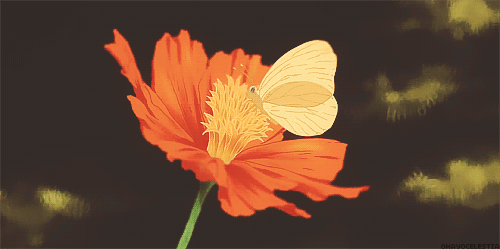
Karaka means significator or signification. Every object- living or dead signifies something in this world. It has a purpose for it's existence.
In Sanskrit dictionary, it means an operator, factor and who or what produces.
Naisargika karakas shows everything that exists in the creation. They include Rahu, Ketu and the seven Planets.
They are presided by Brahma.
Naisargika Karakas show not only human beings, but they show various impersonal things and matter.
They show everything that exists in Brahma's creation and affects a person
They are useful in analysis of general results, i.e. phalita jyotish.
THE HOUSES AND THEIR KARAKA PLANETS—

1ST HOUSE - SUN
2ND HOUSE - JUPITER
3RD HOUSE - MARS
4TH HOUSE - MOON & MERCURY
5TH HOUSE - JUPITER
6TH HOUSE - MARS & SATURN
7TH HOUSE - VENUS
8TH HOUSE - SATURN
9TH HOUSE - JUPITER & SUN
10TH HOUSE - MERCURY, SUN, JUPITER & SATURN
11TH HOUSE - JUPITER
12TH HOUSE - SATURN
note: there is different information on different sites regarding karaka of houses,
i have referred these from a book and view sites and written according to my own opinions and knowledge planets. choose what you want accordingly
KARAKA OF PLANETS—

SUN is the karaka of soul, vitality, heath, heart, right eye, status, influence, presitge, power, ego, father, royalty, royal favour, politics, heat, electricity, fame and honor, medical science.
MOON is the karaka of mind, emotions, mother, liquid, heart, sleep, happiness, travel (distant journeys too), milk, pearls, understanding inclination, good name and fame, facial lustre, royal favour, affluence (wealth), water, peace of mind
MARS is the karaka of courage, passion, valour, bravery, desire, leadership, strength, stamina, weapons, fire, injuries, scandals, controversies, younger brother, police, defense, army, soldiers, defense, anger, violence, leadership, doctors, diseases, opposition, enemies, mechanical engineering.
MERCURY is the karaka of all intelligence, speech, expression, education, communication, mathematics, learning, logic, writing, publishing, business, astrology, accounting, postman, medical knowledge and profession, dancing, drama, precious stones, maternal uncle, friends, discrimination, politics, analytical thinking, memory.
JUPITER is the karaka of knowledge, wisdom, learning, philosophy, teacher, wealth, devotion, children, banking, respect, religious perception, family, fortune, elder brother, husband, body fat, holy places, donation, corpulence, elders, scriptures, benevolence, fruity trees.
VENUS is the karaka of wife, marriage, beauty, fame, sexual matters, jewelry, ornaments, sensuality, pleasures, arts, creativity, singing, flowers, buying &selling, vehicles, perfumes, dance, music, genital organs, flowering trees, cooperation, cows, watery places, whiteness.
SATURN is the karaka of profession, longevity, karma, life, death, adversity, conduct, service, disease, trouble, poverty, losses, calamity, livelihood, theft, servants, old age, dishonor, imprisonment, grief, oils, agriculture, west direction, foreign language and science, minerals, greed, temptation.
RAHU is the karaka of paternal grandfather, movements, traveling, foreigners, outcasts, snake, snake bite, mystery, poison, skin disease, eczema, sharp pain in the body harsh speech, theft, widow, swelling in the body, pilgrimage.
KETU is the karaka of maternal grandfather, consumption, pain, fever, wound, witchcraft, horned animals, dog, cock (idk which one😂), birds, moksha, occult science, detachment, imprisonment, psychic abilities, wisdom, intelligence, healing arts, spices, isolation.
#vedic astrology#vedic astrology notes#vedic astro#astrology community#vedic astro community#astro community#astroblr#sidereal astrology#indian astrology#astrology notes#vedic astro notes#astro notes#astrology#astro observations#astrology observations#astrology placements#planets in astrology#karakas#karaka#karaka in astrology#pac#tarot reading#pick a card#new moon#full moon#saturn retrograde#zodic signs#zodiac#vedic culture#vedic notes
276 notes
·
View notes